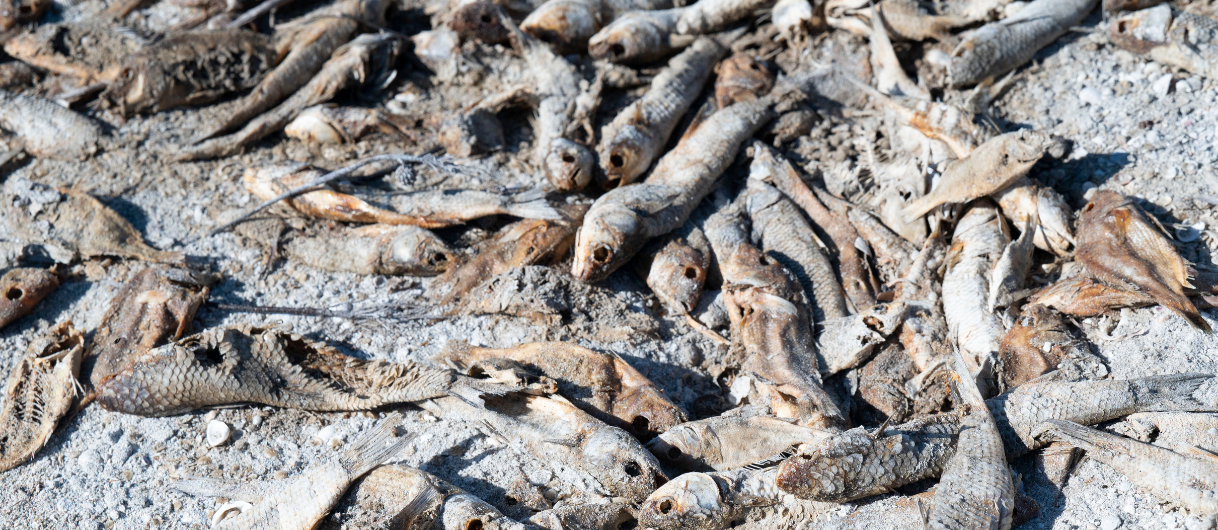Red tide: Not out of sight, but out of mind in Tallahassee
Red tide: Not out of sight, but out of mind in Tallahassee

As red tide burns, our Legislature fiddles – and considers bills that could make things worse
For months a nasty red tide has bloomed up and down much of Florida’s west coast, killing fish, causing respiratory distress and worse.
You wouldn’t know it in Tallahassee, though.
There, our state Legislature is well into its third week, with few bills that would do anything to address the crisis — and development interests blocking new stormwater rules that might help.
Meanwhile there’s no shortage of bills likely to make things even worse.
In recent weeks we’ve detailed many of those bad bills, including measures that would cede ever more ground to the powerful Sprawl Industry, guaranteeing ever more pavement, rooftops, polluted runoff and dirty-water problems.
And we’ve sounded the alarm over the two worst bills of the session: House Bill 1197 and Senate Bill 1240, identical measures we’re calling the “Dirty Water Act” because they would outlaw local water quality, pollution control, even wetlands protections, and preempt all authority to the state.
If you haven’t already done so you should take a few moments to contact HB 1197 sponsor Rep. Randy Maggard (850-717-5054; randy.maggard@myfloridahouse.gov) and SB 1240 sponsor Sen. Danny Burgess (850-487-5023; burgess.danny.web@flsenate.gov) and express your displeasure with these terrible bills.
But this is all par for the course. For when it comes to red tide, the favorite dodge is the assertion that blooms are naturally occurring. That’s true — but there’s ample evidence that human can makes them worse.
Here’s NOAA (the National Oceanic and Atmospheric Administration) asserting that “Chemicals from farming, factories, sewage treatment plants and other sources can become dissolved in water on the land. This water, called runoff, eventually flows into the ocean and can cause algae to grow faster, leading to red tides.” Other scientific studies have determined that “nitrogen-enriched discharges from a highly managed watershed intensify red tide.”
And now another federal agency wants to take a look.
The U.S. Army Corps of Engineers announced last week it would delay the implementation of LOSOM, the new Lake Okeechobee System Operating Manual, because the National Marine Fisheries Service wants to do a formal consultation on how LOSOM might affect sea turtles.
In other words, the agency wants to know how Lake Okeechobee releases to the Caloosahatchee, and ultimately the Gulf, might worsen red tide, and have an impact on sea turtle populations.
If the Fisheries Service determines LOSOM/Lake O releases do NOT affect sea turtles, or don’t represent a significant problem, it could undermine that argument about human impact on red tide.
If the agency determines Lake O releases DO have a significant impact on red tide — and ultimately sea turtles — it could force changes to the LOSOM plan. It’s too early to know exactly what that could look like. But bottom line, if a key federal agency asserts that LOSOM and nutrients flushed from Lake O could red tide worse and increase harm to sea turtles, the consequences of that assessment could be huge.
So much so that even state legislators might take notice.
We would think that given the red tide’s impact on the west coast and the potential for a major blue-green algae bloom on Lake Okeechobee this spring, legislators would recognize the need to sidetrack bills that could ultimately result in more water pollution.
But that’s not how Tallahassee works. Special interests want what they want — and cleaner water isn’t high on their list.
But if it’s high on your list — you might contact your state Representatives or Senators and tell them to knock it off with bills that boost sprawl, undermine local clean-water rules and disempower citizens.
Because slowing or stopping red tide will require a years-long fight. But the one thing we can do, right now, is to stop the bleeding.


